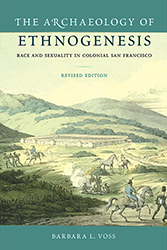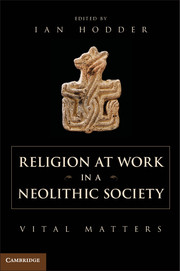Visiting Scholars
Prospective Visiting Scholars
The Archaeology Center welcomes applicants from those who wish to spend a period of time affiliated with the Center as Visiting Scholars. There is a lively intellectual community at the Center in which Visitors are welcome to take part. Generally the Center does not provide funding for Visiting Scholars, but it can from time to time provide work space in the Center and provide access to libraries and facilities.
Those wishing to apply should write at least 6 months in advance to the Director of the Archaeology Center indicating the purpose of the visit, funding, and enclosing a CV.
Current Visiting Scholars
 Diego Calaon
Diego Calaon
I am a post-classical archaeologist and I am the site director of the archaeological excavation in Torcello (Venice, Ca’ Foscari University). The project aim is to investigate the Late Antique and Early Middle Age Origins of Venice. I have also been actively involved in the Early Medieval Comacchio project and in Venetian Colonial projects in Dalmatia. In Croatia and Montenegro my scientific focus has been the evaluation of the impact on the local communities of Venetian and Ottoman trade systems.
In 2014, I have been awarded the prestigious Marie Curie International Outgoing Fellowship by the EU, for the project “Voices of Venice” to pursue my research in the anthro-ecological reappraisal of the Origin of Venice. For this investigation I will be hosted by the Stanford University. The research will stimulate a critical reassessment of the one of the most well studied European historical and social phenomenon, the Serenissima. The proposed project will include a comprehensive environmental approach, and will help to implements innovative methods for re-interpret the formation of the new settlements in the Venetian lagoons.
I am also an associated researcher on the “Mauritian Archaeological and Cultural Heritage” project (M.A.C.H), in collaboration with Aapravasi Ghat and Le Morne, both Unesco WHS in Mauritius. Through these projects, directed by Krish Seetah, I have expanded my global and colonial expertise with reference to the reconstruction of the past, going beyond the classic chronological boundaries inscribed by Italian and European training systems.
Methodologically, my archaeological research has focused primarily on landscape transformations. Using GIS and a holistic approach to data management, I have worked on the impacts of both short and long term landscape and ecological changes.

Jamie Hampson
Jamie Hampson specialises in rock art and heritage studies. He works in the USA, South Africa, India, and Western Australia.
Entitled Rock art, Indigenous heritage, and cultural identity, Jamie’s Marie Curie fellowship is co-hosted by Stanford University (Professor Lynn Meskell) and the University of York (Dr Sara Perry). Jamie is currently on leave from his position as an Associate Professor of Rock Art Studies at the University of Western Australia in Perth. He has also taught at the University of Cambridge, where he co-founded the British Rock Art Group and the North American Archaeological Research Group.
In addition to the Marie Curie International Outgoing Fellowship (Experienced Researcher), Jamie has received grants from Clare College (Cambridge), the Kirk-Greene Africa fund, and the Arts and Humanities Research Council (UK).
Jamie received his doctorate and M.Phil. from the University of Cambridge and his undergraduate degree from the University of Oxford.
Other projects that Jamie has worked on include rock art regionalism; the management and presentation of rock art sites to the public; and the commodification of archaeological heritage.
Jamie’s forthcoming book – published by Left Coast Press (Walnut Creek, CA) – is entitled Rock Art and Regional Identity: a Comparative Perspective.

Angus Mol
I am a post-doctoral researcher, specialized in the study of archaeological networks as well as the indigenous cultures and societies of the Caribbean. I have undertaken fieldwork or collection research on many of the Greater and Lesser Antilles, but my current project looks at how we can combine the archaeological theory of entanglement with methods and theories from the network sciences. Building on previous fieldwork, this is applied to a study of indigenous North Jamaica communities and their encounters with other peoples and material culture from the late pre-historic period onward.
At the core of my research is a deep-seated interest in how human beings engage each other through and because of material culture, in the process of which enduring social and material networks are created that make-up part of the connective tissue that holds human societies together. The high connectivity and multi-cultural nature of the indigenous Caribbean means it provides many opportunities to study this. Still, my interests often take me far beyond the shores of the Caribbean Sea. As such, I have also studied examples of these types of networks in other times and places, often together with regional or disciplinal specialists: from contemporary online gaming and the Beowulf poem to Çatalhöyük.
I do not only enjoy working on transdisciplinary and collaborative research projects, but also take an active interest in the epistemology of science and particularly in the issue of consilience.

Javier Rodriguez-Corral
Javier Rodriguez-Corral is a researcher of the GEPN at Universidad de Santiago de Compostela (Spain) and a CR research member of Wolfson Collage at University of Oxford (UK). His investigation focuses on four main areas: firstly, Iberian prehistory, particularly the Bronze Age and Iron Age of the Atlantic façade; secondly, archaeological theory, particularly theories of agency and performativity; thirdly, art and visual cultures of prehistory, with a focus upon art as a specialized form of material culture; and fourthly, connectivity and materiality in Atlantic Iberia studies, with a particular interest in how factors such as mobility, exchange and communication impact on the local identities and subjectivities. His current projects of investigation for the next years include two related lines in connection with Iberian prehistory. The first is about the study of the development of monumental stone sculpture from the Bronze Age until Late Iron Age of the western Iberia. And the second is about the encounters between Mediterranean agents and local communities in western Iberia since the Bronze Age.
 Burcu Tung
Burcu Tung
I am a Turkish archaeologist with interests in the Neolithic of Southwest Asia, the construction of archaeological knowledge, heritage politics, and the process of dialogue in the formation of historical narratives. I received my PhD in Anthropology from the University of California, Berkeley in 2008.
My primary work as a visiting scholar at Stanford this year will focus on the completion a book-length manuscript that I have been working on with an Armenian-American scholar, Flora Keshgegian. Our work explores the dynamics of recollection and reticence in the shaping of Turkish and Armenian identities. This research draws on memory and heritage as we explore our identities and our past primarily through a process of what we call “critical dialogue”. We scrutinize our perceptions through a reflexive approach in the analysis of our personal experiences to further identify discursive practices in the shaping of each “other”. Our aim is to reach mutual understandings and contribute to historical justice through shaping new narratives. I came into this work after being a part of a Turkish – Armenian dialogue group over 7 years where I began to think about the consequences of the Armenian Genocide as part of an erased heritage of Turkey.
I have taught courses on World Heritage, Heritage Policy and Management, and Public Archaeology at both UC Merced and UC Berkeley between 2011 and 2014.
I am also a practicing archaeologist of over 15 years. I currently supervise the excavations in the North Shelter at Çatalhöyük as one of the field directors of the project. In junction to this work, I continue my research on the site, which focuses on the architectural materials used at the Neolithic settlement and how their analyses may allude to ‘communities of practice’.
 Shu-li Wang
Shu-li Wang
Dr. Shu-Li Wang’s research interests revolve around the construction of and discourses relating to UNESCO World Heritage Sites, the museumification and materialization of China’s historical past, and the uses of heritage and archaeology in nation-building in contemporary China.Wang obtained her Ph.D. in anthropology from University College London (2013). Wang’s doctoral fieldwork at the Anyang Yinxu archaeological site, a UNESCO World Heritage Site in China, documents the event of staging the National Archaeological Park and serves as a point of departure for investigating aspects of heritage conservation and presentation, place making, local perceptions of place, as well as the state discourse on nation-building in the movement towards urbanization and modernity. This research focused on the implementation of heritage policies and its social impacts. This research sheds light on how global heritage discourse has been internalized in China and how global heritage policies are challenged at the local level. Her postdoctoral work at Leiden University(Department of Archaeological Heritage and Society)has explored the development of museums in China, Mexico and Europe in comparative perspectives. Wang’s research sites in China are mainly located in Anyang (Henan Province), Chengdu (Sichuan Province) and Xi’an (Shaan’xi Province), where she did fieldwork in archaeological stations and museums to explore the everyday life of history, heritage and museum making. Wang’s research aims to contribute to a better understanding of the changing roles of heritage and museums in China in the context of globalization and neoliberalism. This doctoral research was supported by the Taiwan Scholarship for Students Studying Abroad, the Chiang Ching-Kuo Foundation for International Scholarly Exchange, and the University College London Research Project Fund. In 2011, she was a visiting student of the Institute of Philology and History at Academia Sinica in Taipei. In 2012/2014, she was also awarded a fellow of the AAS-SSRC Dissertation Developing Program “Rewriting Asian History, Nationalism, Identity and the Politics of the Past”, for which she proposed to study China through the lens of space, landscape and heritage making.
Dr. Wang is the author of ‘Civilization and the Transformation of Xiaotun Village at Yin Xu Archaeological Site, China’ (in C. Brumann and D. Berliner, eds., World Heritage on the Ground – Ethnographic Perspectives),‘Exhibiting the Nation: Cultural Flows, Transnational Exchanges and the Development of Museums in Japan and China, 1900–1950’ (in C. Stolte and Y. Kikuchi, eds., Eurasian Encounters: Museums, Missions, Modernities) and ‘Making, Collecting and Negotiating Heritage Values in China and the Challenges to UNESCO – Chinese Perspectives in Longue Durée(co-author with M. Rowlands, in H. Geismar and J. Anderson, eds., The Routledge Companion to Cultural Property). Currently, Wang is working on her book manuscript “The Politics of China’s Cultural Heritage on Display: Yinxu Archaeological Park in the Making” (Left Coast Publisher); she is also developing a research project on the topic of archaeological parks in comparative perspective, with a view towards facilitating dialogue at the intersection of the global heritage phenomenon, state policy and local interest.
Home institute: Department of Archaeological Heritage and Society, Leiden University, International Institute for Asian Studies
Contact: shuli0401@gmail.com



